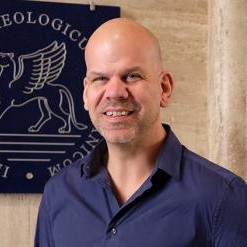The Circus of Carthage – a monument and its quartier


The initiation of the excavation project at the circus of Carthage opened a new chapter for the DAI Rome and its research within the city. Extensive excavations, lasting for several years, took place as early as 1974 and 1984. The results can be seen today in the archaeological parks Quartier Magon and Quartier Didon.
Carthage was founded in the 9th century BCE and, starting the 5th century BCE, ruled over large parts of North Africa and the western Mediterranean. Numerous colonies, trading posts, and expeditions demonstrate the significance of the metropolis as one of the most important North African cities. The importance of the city, embodied as a center of political power and as a trade metropolis with a port located along the southern Mediterranean coast at the junction between east and west, enabled Carthage to maintain its status as one of the largest cities of the Mediterranean for as many as 1,500 years.
The Roman Circus of Carthage dominated the south-western district of the city. It was the largest building in Roman Carthage. Elsewhere its dimensions were only exceeded by the Circus Maximus in Rome. Having been one of the earliest buildings in Roman Carthage, it influenced the architecture of circuses built in other parts of Africa. It also had a significant influence on the south-western district of Carthage. It determined the urban development of an important part of the settlement on its south-western edge and had to be made accessible through streets, canals, and neighboring buildings.
The aim of the project is on the one hand to provide an overall reconstruction of the circus in time and space, ranging from its erection and development to its infrastructure and usage. On the other hand, it is to conduct a diachronic study of the urban development of its district, where it played an influential role. The district is located within the vicinity of the ancient coast line where the ports of the early and middle Punic city are presumed to have been. Outside the city limits are, at least during Roman time period, the necropoleis. How was the area used during Punic rule? How did the city limits shift over time? How was the area prepared for the establishment of the circus and used after its original purpose diminished? – These are just a few questions that will play a role in the scope of the project. Today, this is the only area of Carthage where it is possible to undergo a large-scale urban study spanning several eras within the archaeological zone of the UNESCO World Heritage Site.
The project comprises a collaboration of young scientists with extensive experience in their field of specialty as well as in archaeological research in North Africa. Dr. Ralf Bockmann is responsible for the supervision of the project for the DAI Rome and Dr. Hamden Ben Romdhane for the INP Tunis, whereas the former focuses on the Roman time period and Late Antiquity, in particular Byzantine time period, and the latter the Roman phases. Scientific co-directors of the project are Dr. des. Frerich Schön from the University Tübingen and Dr. Iván Fumadó Ortega. Frerich Schön, also responsible for covering the Roman time period, manages the field of archaeometry. Iván Fumadó Ortega is the field director and responsible for handling the Punic phases. Further directing members of the excavation team are currently Dr. Stefano Cespa (Milan), Dr. Yamen Sghaier (INP Tunis), and Boutheina Maraoui (University of Tunis). The architect, Dr. Nicole Röring from Bamberg, is responsible for the building survey and the reconstruction of the monument. The processing of the archaeological findings is supervised by Dr. Elyssa Jerray (Paris) and her team of experts.
Members

Dr. Ralf Bockmann
DAI Rome
ralf.bockmann@dainst.de

Dr. Hamden Ben Romdhane
Institut National du Patrimoine
hamdenbenromdhane@
topnet.tn
Figure Captions
Fig. 1 Surveying work at the roman circus of Carthage, Tunisia [photo by R. Bockmann].
Fig. 2 Map of the DAI excavation of the roman circus of Carthage, Tunisia [photo by I. Fumadó Ortega].